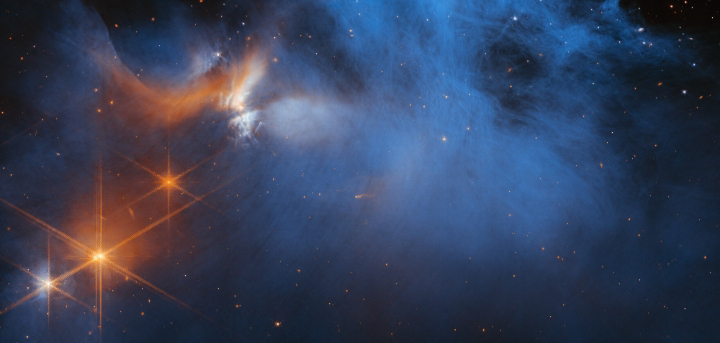James Webb Finds the Coldest Ice in the Known Universe and a Shelter for Life-Requiring Molecules
The James Webb Space Telescope, which at this point can be safely described as an inverterate record breaker, has detected yet another superlative cosmic curiosity: the coldest ice in the known universe.
That interstellar ice cooled to minus 440 degrees Fahrenheit — just under 11 Kelvin, and at spitting distance from absolute zero, according to a new study published in the journal Nature Astronomy.

The frigid formations were found as part of a star-forming molecular cloud that resides in a region of space, in the southern part of the Chamaeleon constellation, about 500 light-years from Earth.
James Webb’s powerful Near Infrared Camera (NIRCam) and a healthy, bright background of starlight, astronomers were able to spot frozen molecules that might have gone unnoticed until now.
“The ice appears to downcast against the continuum of background starlight” study co-author Klaus Pontoppidan of the Space Telescope Science Institute said in a statement.
“In regions that are this cold and dense, much of the light from the background star is blocked, and Webb’s excellent sensitivity was essential for detecting stars and hence identifying ions in molecular clouds.
Theoretically, the ice also contains the key elements needed to form a habitable planet, known collectively as CHONS: carbon, hydrogen, oxygen, nitrogen, and sulfur.
Some, the scientists found, came in the form of organic molecules such as methanol and possibly ethanol as well as other compounds essential to life, including carbon dioxide, ammonia, methane and, of course, water.
Scientists say that this could have a huge impact on our understanding of the occurrence of life in the universe.
“Our detection of complex organic molecules, such as methanol and potentially ethanol, also suggests that many stars and planetary systems that evolved in this particular cloud would have obtained the molecules in a fairly advanced chemical state,” study co-author Will Rocha said.
An astronomer explained. Leiden Observatory, in statement. “This may mean that the presence of precursors of prebiotic molecules in planetary systems is a normal consequence of star formation, rather than a unique feature of our own solar system.”
The scientists were also able to measure the amount of sulfur trapped in the icy dust for the first time, and while this amount was less than expected, they believe it indicates that other CHONS are still present but trapped in more solid material. and thus avoid detection.
Although some details have been ironed out, the findings may prove essential in understanding the formation of organic molecules.
“These observations open a new window on the way the simple and complex molecules that are needed to form the building blocks of life form form,” said Leiden astronomer Melissa McClure, lead author of the study.
Do not forget to share your opinion with us to provide you with the best posts !



0 Comments